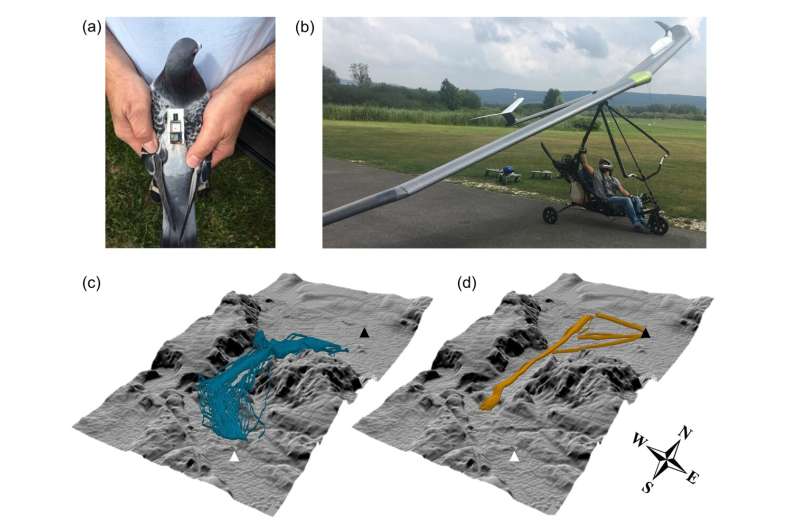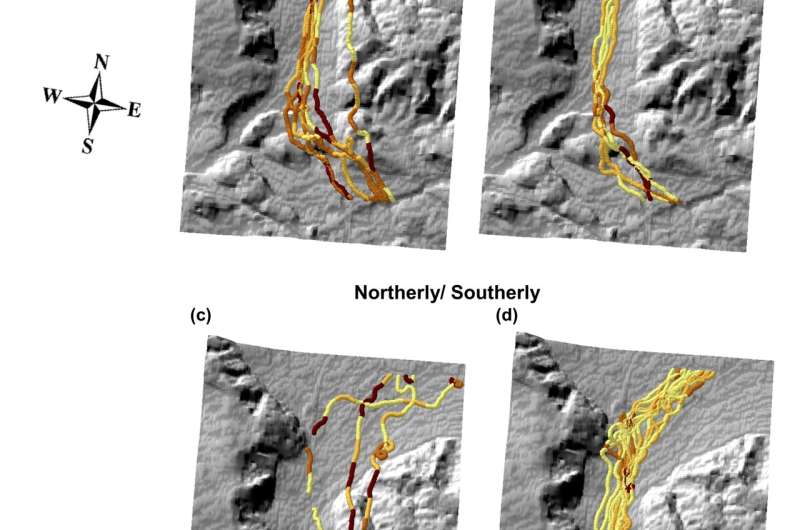Flight of birds can help provide predictions on turbulence, new study suggests

A new study led by Swansea University has shown how the flight of birds can offer a meteorological insight into fine scale environmental conditions.
While all animals that fly need to respond to atmospheric turbulence, little is known about how this is accomplished, with traditional methods for measuring it in nature being logistically difficult and costly.
Academics from Swansea University collaborated on a new approach with the University of Leeds, the Max Planck Institute of Animal Behavior and the University of Konstanz, which involved flying a small aircraft along and close to the track of pigeons as they traveled back to their loft, measuring the turbulence levels on the study site during each journey.
Using GPS, barometric pressure and acceleration data loggers attached to the birds, the team looked at whether fine scale changes in flight altitude and motion could be used as proxies of turbulence strength, comparing this to the turbulence measured by the anemometer onboard the aircraft.
The results, published in the Journal of the Royal Society Interface, show the unsteadiness of the birds, as they bump up and down, can be used to understand how turbulent the conditions are.
This new research unlocks the possibility of using bird-borne sensors to calculate freestream turbulence in nature, which would be a great advantage in inaccessible areas and conditions, like how seal-borne sensors are used to measure salinity and sea temperature under ice caps.

Lead-researcher Dr. Emmanouil Lempidakis, who conducted this research as part of his Ph.D., said, "Although the birds choose when and where to fly, this method can provide us with an understanding of fine scale environmental conditions without the cost of other approaches, and enables to look at turbulence from a different perspective."
The team are already looking at ways to use this newly acquired knowledge to investigate how the flight effort and route selection of these birds is potentially influenced by turbulence.
Professor Emily L. C. Shepard, an expert in the movement ecology of wild animals, explained, "What was really interesting was that pigeons could fly in conditions that were too turbulent for the ultralight, but there was also some suggestion birds avoided certain routes with very high turbulence. This raises the question of how birds can cope with high turbulence and also how it affects their flight costs."
More information: Emmanouil Lempidakis et al, Estimating fine-scale changes in turbulence using the movements of a flapping flier, Journal of The Royal Society Interface (2022). DOI: 10.1098/rsif.2022.0577
Journal information: Journal of the Royal Society Interface
Provided by Swansea University




















